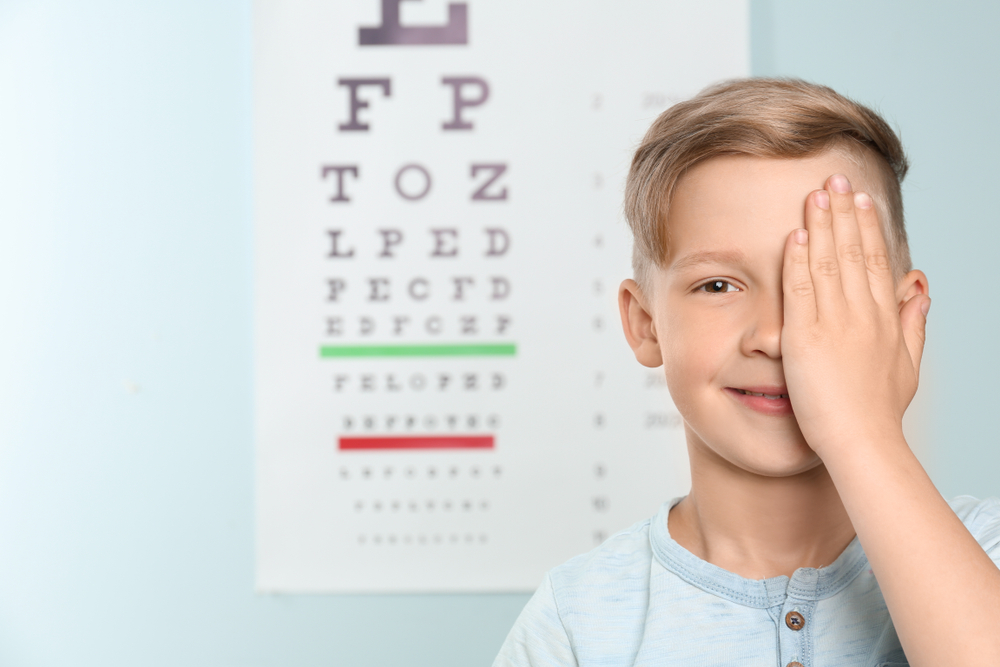
Myopia is a refractive error that affects a significant portion of the global population, including children. In this condition, the eye's ability to focus light on the retina is impaired, resulting in blurred distance vision. As the prevalence of myopia in children continues to rise, it is crucial for parents and caregivers to understand this condition and its potential implications.
Causes of Myopia in Children
While the precise causes of myopia are not entirely clear, several factors have been identified as potential contributors to its development in children:
- Genetics: Myopia tends to run in families, suggesting a strong genetic component. If one or both parents are myopic, the child has a higher likelihood of developing the condition.
- Environmental Factors: Prolonged near work, such as reading, using digital devices, and studying in low light conditions, has been linked to an increased risk of myopia development in children.
- Lack of Outdoor Time: Research suggests that children who spend less time outdoors and engage in fewer outdoor activities have a higher risk of developing myopia. Exposure to natural light and the ability to focus on distant objects may play a protective role.
Identifying Myopia Symptoms
As a parent or caregiver, it is important to be aware of the common symptoms of myopia and seek professional advice if you notice any of the following:
- Squinting or frequent eye rubbing
- Holding books or digital devices close to the face
- Complaining of headaches or eye strain
- Difficulty seeing the blackboard or whiteboard at school
- Poor performance in activities requiring distance vision
The Importance of Early Intervention in Myopia Management
Early intervention is crucial in managing myopia in children for several reasons:
- Slowing Progression: Myopia tends to progress more rapidly in children, and early intervention can help slow down this progression, reducing the risk of developing high myopia and associated complications later in life.
- Improved Visual Function: Addressing myopia early ensures that children can see clearly and perform well in school and other activities, promoting their overall development and well-being.
- Preventing Complications: Early intervention reduces the risk of developing sight-threatening conditions associated with high myopia, such as retinal detachment, glaucoma, and myopic maculopathy.
- Improved Quality of Life: By addressing myopia early, children can enjoy better visual comfort and participate in activities without the limitations imposed by uncorrected vision problems.
Benefits of Tackling Myopia Early
Addressing myopia in children through early intervention offers numerous benefits:
- Improved Academic Performance: Clear vision is essential for learning and academic success. By correcting myopia early, children can see clearly in the classroom, reducing the strain on their eyes and improving their ability to focus and concentrate.
- Enhanced Confidence and Self-Esteem: Children with uncorrected vision problems may struggle with social interactions, sports, and other activities, potentially impacting their confidence and self-esteem. Early intervention can help prevent these issues and promote overall well-being.
- Reduced Risk of Eye Strain and Headaches: Uncorrected myopia can lead to eye strain, headaches, and fatigue, which can negatively impact a child's quality of life. Early intervention can alleviate these symptoms and promote better overall health.
- Cost-Effectiveness: Early intervention and myopia management can be more cost-effective in the long run compared to treating complications associated with high myopia later in life.
- Proactive Eye Health Care: By addressing myopia early, parents and caregivers can instill the importance of regular eye exams and proactive eye health care, setting the stage for a lifetime of good vision and eye health.
Tackling myopia early in childhood not only addresses the immediate visual needs but also sets the foundation for a lifetime of better eye health and overall well-being.
Myopia Management Methods for Children
There are various myopia management methods available for children, and the most appropriate approach may depend on the child's age, degree of myopia, and other factors. Here are some common methods:
- Orthokeratology (Ortho-K): This method involves wearing specialized rigid gas-permeable contact lenses overnight to temporarily reshape the cornea, allowing for clear vision during the day without the need for glasses or contact lenses.
- Atropine Eye Drops: Low-dose atropine eye drops have been shown to slow the progression of myopia in children. This method is typically used in combination with other treatments.
- Multifocal or Bifocal Lenses: These lenses provide clear distance and near vision, reducing the need for constant focusing and potentially slowing the progression of myopia.
It is essential to consult with an optometrist to determine the most appropriate myopia management method for your child, considering their specific needs and preferences.
Schedule Your Child’s Eye Exam with Ives Family Eye Care Today
Myopia in children is a growing concern, and early intervention is crucial for managing this condition effectively. By prioritizing early intervention and adopting a proactive approach to myopia management, you can ensure that your child enjoys clear vision, academic success, and a lifetime of good eye health.
Take the first step by contacting our team of experts to discuss myopia management options tailored to your child's needs, visit Ives Family Eye Care at our office in Miami, Florida, or call (786) 755-1800 to schedule an eye exam today. We proudly serve patients in Aventura, Golden Beach, Sunny Isles Beach, North Miami, Ojus, Miramar and Hallandale, providing top-quality eye care to our neighboring communities.






